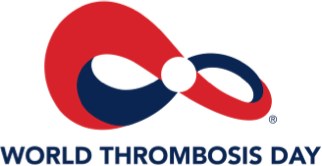External Resources
Explore Resources from WTD Partners
Explore a comprehensive list of educational resources on blood clots provided by World Thrombosis Day partner organizations worldwide. These resources are designed to empower patients and healthcare professionals with crucial information about thrombosis. From insightful articles to engaging videos and downloadable brochures, these resources cover various aspects of blood clot awareness and prevention in multiple languages.
If your organization is interested in showcasing its educational materials on our platform, please email the campaign team at wtd@isth.org to have your resources featured and reach a broader audience dedicated to thrombosis education.

Partner resources
Anticoagulation Forum
Location: United States
Website: https://acforum.org/
Anticoagulation Forum is the largest organization of its kind helping practitioners improve patient care by providing current and relevant information on best practices. Our membership includes more than 13,000 physicians, nurses, and pharmacists representing over 3,000 anticoagulation services (clinics). Our members directly support over 1 million patients annually.
- Healthcare professional webinars: https://acforum.org/web/education-webinars.php
BMS / Pfizer Alliance: No Time to Wait
Brazilian Society on Thrombosis and Haemostasis (SBTH)
Location: Brazil
Website: https://sbth.org.br
A Sociedade Brasileira de Trombose e Hemostasia (SBTH) foi fundada em 10 Outubro de 2018. É uma entidade civil sem fins lucrativos que visa promover a educação continuada e disseminar conhecimento para a redução do tromboembolismo e suas consequências. Atualmente, a SBTH trabalha para o fomento de políticas governamentais, educacionais e assistenciais através da promoção de pesquisas médicas relacionadas à trombose e doenças hemorrágicas congênitas ou adquiridas.
CancerClot information on Cancer-Associated Thrombosis
Location: International
Website: https://cancerclot.info/
Centers for Disease Control and Prevention (CDC)
Location: United States
Website: https://www.cdc.gov
The CDC is committed to reducing the significant disease burden of VTE and has made hospital-associated VTE a patient safety priority. They have hosted numerous activities to raise awareness of DVT and PE, and have established pilot surveillance programs to improve hospital tracking for each condition. Several educational resources have been developed for the public, including:
- DVT slideshow widget
Hear Her Campaign – https://www.cdc.gov/hearher/index.html - Additional information and resources: http://www.cdc.gov/ncbddd/dvt/index.html.
Foundation for Women & Girls+ with Blood Disorders (FWGBD)
Location: United States
https://www.fwgbd.org
Foundation for Women & Girls+ with Blood Disorders (FWGBD), a non-profit 501(c)3 organization, was launched to serve as a single site, single source where physicians and healthcare providers can obtain information. Provider education, across disciplines, will be the focus of the Foundation. We will benefit women and girls by educating their providers. https://www.fwgbd.org/fwgbd-2024
- Patient resources: https://www.fwgbd.org/resources/patient-resources
- HCP resources to use with patients: https://www.fwgbd.org/provider-handouts
National Blood Clot Alliance (NBCA)
Location: United States
Website: www.stoptheclot.org
The National Blood Clot Alliance (NBCA) is a non-profit, voluntary health organization dedicated to advancing the prevention, early diagnosis and successful treatment of life-threatening blood clots such as deep vein thrombosis, pulmonary embolism, and clot-provoked stroke. NBCA works on behalf of people who may be susceptible to blood clots, including, but not limited to, people with clotting disorders, atrial fibrillation, cancer, traumatic injury, and risks related to surgery, lengthy immobility, child birth and birth control. The organization accomplishes its mission through programs that build public awareness, educate patients and healthcare professionals, and promote supportive public and private sector policy.
- New patient resource guide
- Additional patient resources
- Patients can learn more about clots, here: https://www.stoptheclot.org/learn_more/about-clots.htm.
North American Thrombosis Forum (NATF)
Location: United States
Website: https://thrombosis.org/
North American Thrombosis Forum improves patient care, outcomes, and public health by advancing thrombosis research and education.
- NATF Podcast: ClotCast – https://thrombosis.org/clotcast/
- NATF Patient Support Groups: https://thrombosis.org/patients/all-support-groups/
- NATF Patient Support Resources: https://thrombosis.org/patients/additional-resources/support-resources/
- NATF New patient support materials : https://thrombosis.org/category/patient-news/additional-resources/newly-diagnosed-patient-materials/
Sociedad Mexicana de Trombosis y Hemostasia
Location: Mexico
Website: https://www.someth.org.mx/
La Sociedad Mexicana de Trombosis y Hemostasia (SOMETH) es una asociación civil sin fines lucrativos, integrada por profesionales de la salud que se dedican al estudio, prevención, diagnóstico y tratamiento de las enfermedades asociadas a cualquier tipo de trombosis y/o trastornos de la hemostasia.-
- Patient resources (Spanish) https://www.someth.org.mx/someth/index.php/pacientes
Resources for healthcare professionals: - SBTH Podcast: https://open.spotify.com/show/6e8071YrUrctvS0Dc4l3IU?si=593238338ad546f1
- SBTH and WTD: https://sbth.org.br/wtday2023/
Thrombosis Canada
Location: Canada
Website: https://thrombosiscanada.ca/
Thrombosis CanadaTM (TC) promotes excellent patient care and improved outcomes, for patients with thrombosis, through high-quality knowledge translation, educational resources and point-of-care guidance for diverse groups of healthcare professionals, as well as delivering education for patients and the general public.
- Patient educational videos: https://thrombosiscanada.ca/hcp/practice/patient_support
- Patient information sheets (French/English): https://thrombosiscanada.ca/patients_and_caregivers/about_thrombosis/Patient_Info_sheets
- HCP Clinical Guides: https://thrombosiscanada.ca/hcp/practice/clinical_guides
Thrombosis Ireland
Location: Ireland
Website: https://thrombosis.ie
Thrombosis Ireland is a Not for Profit Company Limited by Guarantee. We are a full volunteer organization and we submit annual accounts to the Charity Regulator. Thrombosis Ireland was set up in 2016 by thrombosis patients Ann Marie O’Neill & Shay Kearney. They were seeking to address the lack of information, education, and support for thrombosis patients, and their families in Ireland.
- Thrombosis Alert Card (available in 20 languages) https://thrombosis.ie/alert-card/
Thrombosis UK
Location: United Kingdom
Website: www.thrombosisuk.org
Thrombosis UK is a UK based charity whose stated mission is to increase awareness of thrombosis among the public and health professionals, and to raise research funds to improve patient care through improved prevention and treatment of venous thromboembolic disease. Dedicated to promoting awareness of thrombosis in the UK, Thrombosis UK offers various resources for patients and opportunities to engage.
- Patient educational resources: https://thrombosisuk.org/information-fact-sheets.php
Resources for Healthcare Professionals
The WTD campaign is committed to empowering healthcare professionals, and we aim to provide the tools needed to excel and make a significant impact in the fight against thrombosis. Discover resources made possible by our campaign partners and supporters, including videos, VTE risk assessment guidelines and general VTE resources.
WTD Supporter Resources for Healthcare Professionals
References for VTE Risk Assessment Guidelines and Models
- Barbar, S., Noventa, F., Rossetto, V., Ferrari, A., Brandolin, B., et al. A Risk Assessment Model for The Identification of Hospitalized Medical Patients at Risk for Venous Thromboembolism: The Padua Prediction Score. J Thromb Haemost 2010; 8: 2450–7.
- Catterick, D., Hunt, B. Impact of the National Venous Thromboembolism Risk Assessment Tool in Secondary Care in England. Retrospective Population-Based Database Study. Blood Coagul Fibrinolysis, 2014 Sept; 25(6):571-576.
- Lester, W., Freemantle, N., Begaj, I., Wood, J., Pagano, D. Fatal Venous Thromboembolism Associated with Hospital Admission: A Cohort Study to Assess the Impact of a National Risk Assessment Target. Heart, 2013. Dec; 99(23):1734-9.
- Mahan, C.E., Liu, Y., Turpie, A.G., Vu, J.T., ,Heddle, N., et al. External Validation of a Risk Assessment Model for Venous Thromboembolism in the Hospitalised Acutely-ill Medical Patient (VTE-VALOURR). Journal of Thrombosis and Haemostasis, 2014; 112 (4):692.
- NHS National Patient Safety Agency, Feb 2011. How to Guide: Venous Thromboembolism Risk Assessment.
- NICE Implementation Collaborative Consensus, 2014. Supporting Local Implementation of NICE Guidance on Use of the Novel (non-Vitamin K Antagonist) Oral Anticoagulants in Non-Valvular Atrial Fibrillation.
- Patient Centered Outcomes Resesarch Institute (PCORI), 2014. Improving Patient-Nurse Communication to Prevent a Life-Threatening Complication. Available from: www.pcori.org/research-in-action/improving-patient-nurse-communication-prevent-life-threatening-complication.
- Rosenberg, D., Eichorn, A., Alarcon M., McCullagh, L., McGinn, T., Spyropoulos, A.C. External Validation of the Risk Assessment Model of the International Medical Prevention Registry on Venous Thromboembolism (IMPROVE) for Medical Patients in Tertiary Health System. Journal of American Heart Association, 2014;3:e001152.
- Squizzato, A., Agena, W. A new Era for Venous Thromboembolism Prevention in Medical Inpatients. Journal of Thrombosis and Haemostasis, 2014; 112:692-699.
- Stroud, W., Whitworth, J.M., Miklic, M., Schneider, K.E., Finan, M.A., et al. Validation of a Venous Thromboembolism Risk Assessment Model in Gynecologic Oncology. Gynecologic Oncology, 2014 Jan; 134(1):160-163.
- Thrombosis Canada, 2015. Thromboprophylaxis: Hospitalized Medical Patients.
- Thrombosis Canada, 2015. Thromboprophylaxis: For Non-Orthopedic Surgery.
- VTE Risk Facts. Available from: VTERiskfacts.com.
- Zhou, H., Wang, L., Tang, Y., Yang, J., Wang, B., et al. Validation of a Venous Thromboembolism Risk Assessment Model in Hospitalized Chinese Patients: A Case-Control Study. Journal of Atherosclerosis and Thrombosis, 2014; 21:261-272.
- Zhou, H., Peng, L., Yan, Y., Yi, Q., Tang, Y., et al. Validation of the Caprini Risk Assessment Model in Chinese Hospitalized Patients with Venous Thromboembolism. Thrombosis Research, 2012; 130(5):735-740.
General VTE References
- Armstrong Institute for Patient Safety and Quality. “Preventing Venous Thromboembolism.” Available from: www.hopkinsmedicine.org/armstrong_institute/improvement_projects/VTE/index.html.
- Beckman, M. G., Hooper, W. C., Critchley, S. E., & Ortel, T. L. (2010). Venous thromboembolism. American Journal of Preventive Medicine, 38(4), S495–S501.
- Centers for Disease Control and Prevention. Data & Statistics. (n.d.). Retrieved February 28, 2014, from http://www.cdc.gov/ncbddd/dvt/data.html.
- Cohen, A. T., Agnelli, G., Anderson, F. A., Arcelus, J. I., Bergqvist, D., Brecht, J. G., et al. VTW Assessment Group in Europe (2007). Venous thromboembolism (VTE) in Europe. The number of VTE events and associated morbidity and mortality. Journal of Thrombosis and Haemostasis, 98(4), 756–764.
- De Pasquale, Sue. (2015). Trailblazing Trend. Johns Hopkins Nursing. Retrieved from: http://magazine.nursing.jhu.edu/wp-content/uploads/2015/07/Johns_Hopkins_Nursing_Summer_2015.pdf.
- Engbers, M. J., van Hylckama Vlieg, A., & Rosendaal, F. R. (2010). Venous thrombosis in the elderly: incidence, risk factors and risk groups. Journal of Thrombosis and Haemostasis, 8(10), 2105–2012.
- Falck-Yitter, Y., Francis C. W., Johanson, N. A., Curley, C., Dahl, O. E., Schulman, S., et al. American College of Chest Physicians. (2012). Prevention of VTE in orthopedic surgery patients: Antithrombotic Therapy and Prevention of Thrombosis, 9th ed: American College of Chest Physicians Evidence-based Clinical Practice Guidelines. Chest, 141(2 Suppl), e278S–325S.
- Gould, M. K., Garcia, D. A., Wren, S. M., Karanicolas, P. J., Arcelus, J. I., Heit, J. A., . . . American College of Chest Physicians. Prevention of VTE in nonorthopedic surgical patients: Antithrombotic Therapy and Prevention of Thrombosis, 9th ed: American College of Chest Physicians Evidence-based Clinical Practice Guidelines. Chest, 141(2 Suppl), e227S–277S.
- Heit, J. A., Cohen, A. T., & Anderson, F. A. (2005). Estimated Annual Number of Incident and Recurrent, Non-Fatal and Fatal Venous Thromboembolism (VTE) Events in the US. Blood (ASH Annual Meeting Abstracts), 106, abstract 910.
- Heit, J. A. (2008). The epidemiology of venous thromboembolism in the community. Arteriosclerosis, Thrombosis, and Vascular Biology, 28(3), 370–372.
- Hunt, B. J. (2008). Awareness and Politics of Venous Thromboembolism in the United Kingdom. Arteriosclerosis, Thrombosis, and Vascular Biology, 28(3), 398–399.
- Jha, A. K., Larizgoitia I., Audera-Lopez C., Prasopa-Plaizier N., Waters, H., & Bates D. W. (2013). The global burden of unsafe medical care: analytic modelling of observational studies. BMJ Quality & Safety, 22(10), 809–815.
- Kahn, S., Lim, W., Dunn, A. S., Cushman, M., Dentali, F., Akl, E. A., et al. American College of Chest Physicians. Prevention of VTE in nonsurgical patients: Antithrombotic Therapy and Prevention of Thrombosis, 9th ed: American College of Chest Physicians Evidence-based Clinical Practice Guidelines. Chest, 141(2 Suppl), e195S–226S.
- Lloyd-Jones, D., Adams, R. J., Brown, T. M., Carnethon, M., Dai, S., Simone, G. D., et al. Wylie-Rosett, J. (2010). Heart Disease and Stroke Statistics–2010 Update: A Report From the American Heart Association. Circulation, 121(7), E46–E215.
- Nicolaides, A. N., Fareed, J., Kakkar, A. K., Comerota, A. J., Goldhaber, S. Z., Hull, R., . . . Warwick, D. (2013). Prevention and treatment of venous thromboembolism–international consensus statement. International Angiology, 32(2), 111–260.
- Office of the Surgeon General. (2008). The Surgeon General’s Call to Action to Prevent Deep Vein Thrombosis and Pulmonary Embolism. Rockville, MD: National Heart, Lung, and Blood Institute (US). Available from: http://www.ncbi.nlm.nih.gov/books/NBK44178/.
- Tagalakis, V., Patenaude, V., Kahn, S. R., & Suissa, S. (2013). Incidence of and mortality from venous thromboembolism in a real-world population: the Q-VTE Study Cohort. The American Journal of Medicine, 126(9), 832.e13–21.
- Wells, P., Forgie, M., & Roger, M. (2014). Treatment of Venous Thromboembolism. Journal of the American Medical Association, 311(7), 717–728.
- Yusuf, H. R., Tsai, J., Atrash, H. K., Boulet, S., & Grosse, S. D. (2012). Venous thromboembolism in adult hospitalizations−United States, 2007-2009. Morbidity and Mortality Weekly Report, 61(22): 401–404.
- Zicotti, G. (Ed.). (2014). New Oral Anticoagulants for Acute Venous Thromboembolism. Journal of the American Medical Association, 311(7), 731–732

